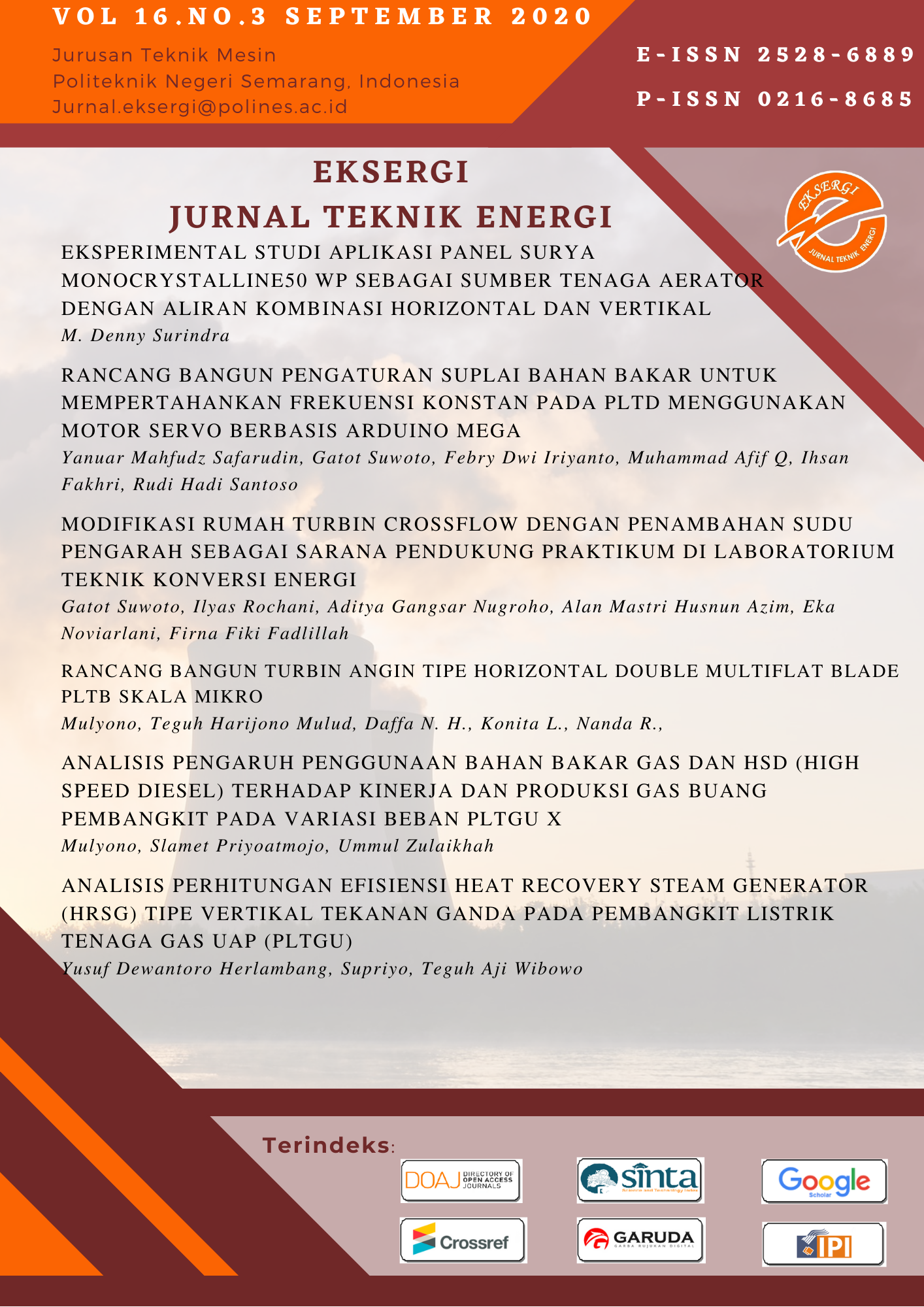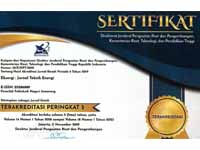RANCANG BANGUN TURBIN ANGIN TIPE HORIZONTAL DOUBLE MULTIFLAT BLADE PLTB SKALA MIKRO
DOI:
https://doi.org/10.32497/eksergi.v16i3.2216Keywords:
PLTB, Tipe horizontal double multilflat blade, menara, sheet metalAbstract
Perancangan PLTB skala mikro di Gedung Magister lantai 3 Polines menggunakan menara dengan ketinggian 7000 mm dengan bentuk turbin angin tipe horizontal double multiflat blade menggunakan material berbahan sheet metal. Dilakukan pengujian untuk mengimplementasikan model turbin angin tipe horizontal double multiflat blade. Pengujian diawali dengan menggunakan udara yang dihembuskan peralatan blower dengan kecepatan angin 1 m/s; 2 m/s; 3 m/s; 4 m/s; dan 5 m/s. Energi listriknya digunakan untuk mengisi aki dengan tegangan 7,6 Volt setiap 15 menit. Pengujian selanjutnya dilakukan pada PLTB yang terpasang di menara untuk mengisi aki dengan tegangan 6 Volt. Hasil dari pengujian turbin angin menggunakan blower diperoleh nilai efisiensi tertinggi 2,946 % pada kecepatan angin 3,62 m/s dan nilai efisiensi terendah 0 % pada kecepatan angin 1,97 m/s. Sedangkan dari pengujian pada PLTB terpasang diperoleh nilai efisiensi tertinggi 2,857 % dan nilai efisiensi terendah 0 % pada kecepatan angin 1,08 m/s sampai dengan 1,98 m/s.Downloads
Published
Issue
Section
License
Authors who publish with this journal agree to the following terms:Authors retain copyright and grant the journal right of first publication with the work simultaneously licensed under a Creative Commons Attribution License that allows others to share the work with an acknowledgement of the work's authorship and initial publication in this journal.
Authors are able to enter into separate, additional contractual arrangements for the non-exclusive distribution of the journal's published version of the work (e.g., post it to an institutional repository or publish it in a book), with an acknowledgement of its initial publication in this journal.
Authors are permitted and encouraged to post their work online (e.g., in institutional repositories or on their website) prior to and during the submission process, as it can lead to productive exchanges, as well as earlier and greater citation of published work (See The Effect of Open Access).







